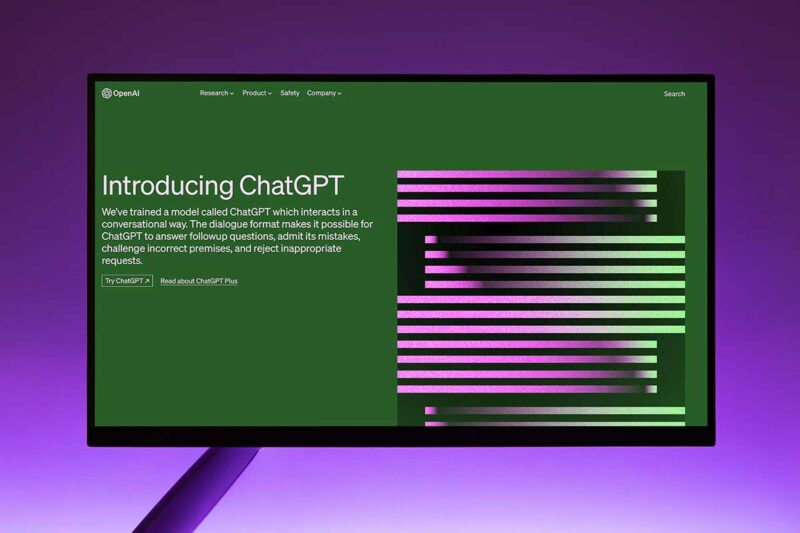Copywriting is the #1 obstacle therapists face when updating their websites, writing blog posts, optimizing their Psychology Today profiles, or doing any kind of marketing. With the advent of AI tools, a pressing question arises: “Can you train ChatGPT to write like you?” The answer is a resounding yes, and this guide is dedicated to showing you precisely how to accomplish that.
To effectively train ChatGPT to write like you, understanding and conveying two critical elements is essential: your brand voice and your writing style.
- Your brand voice is the embodiment of your practice’s personality and values, expressed through words. It’s how your practice ‘speaks’ to the world.
- Your writing style is how your brand voice is presented. It involves the choice of words, the construction of sentences, and the overall readability of your text. A clear and accessible writing style can make complex psychological concepts more understandable, break down communication barriers, and make your dream client feel more at ease.
As we progress through this guide, you’ll discover detailed strategies to train ChatGPT to write like you, easing the burden of therapist copywriting tasks. By mastering these techniques, you can leverage ChatGPT to reflect your professional tone and style, ensuring your written content resonates authentically with your audience.
5 Steps to Train ChatGPT To Write Like You
- Define Your Brand Voice and Objectives: Clearly articulate the characteristics, tone, and style of your desired brand voice. Identify the key messages and values you want to convey in your writing.
- Provide Writing Samples: Give ChatGPT examples of your existing content. These samples should represent your current writing style and the brand voice you wish to emulate or refine.
- Offer Detailed Feedback: After receiving initial outputs from ChatGPT, provide specific feedback. Highlight what aligns with your style and what doesn’t, focusing on tone, word choice, and overall style.
- Iterate and Refine: Engage in an iterative process with ChatGPT. Use the feedback loop to gradually refine the AI’s outputs, guiding it closer to your unique writing style with each interaction.
- Consistently Update Inputs: As your style evolves or as new content trends emerge, continuously provide updated examples and guidance to ChatGPT to ensure it stays aligned with your current brand voice and writing style.
What is ChatGPT and How Can Therapists Use It?
ChatGPT, powered by OpenAI’s advanced language models, stands as a cutting-edge tool in the domain of natural language processing. It’s designed to understand, generate, and refine text in a way that closely mimics human communication, making it an invaluable asset for therapists seeking to enhance their written content.
Deep Language Understanding: At its core, ChatGPT possesses the ability to understand complex language constructs. This means it can analyze text not just for basic grammar or style, but it can grasp subtler aspects like tone, context, and intent. For a therapy practice, this means that when you train ChatGPT to write like you, it can help tailor messages that are empathetic, informative, and aligned with your therapeutic approach.
Feedback-Based Learning: One of the most significant capabilities of ChatGPT for therapists is its iterative learning process. Through feedback and continuous interaction, ChatGPT can refine its output to better align with the specific preferences and nuances of your brand voice as a therapist. This feature is especially beneficial for honing the subtleties of communication that are so important in the mental health field.
Time Efficiency and Consistency: For therapists juggling numerous responsibilities, ChatGPT offers a time-efficient solution for content creation. It can rapidly generate drafts and ideas, which you can then review and personalize. This not only saves time but also ensures a high degree of consistency in your brand’s communication, an essential factor in building trust and recognition among clients.
Prompt-Based Interactions:
A prompt is a set of instructions or a specific question provided to ChatGPT or similar AI models to elicit a particular response or to guide the generation of content on a desired topic. It serves as a starting point for the AI to understand and respond to the user’s request.
Create a Meta Prompt to Train ChatGPT to Write Like You
A “meta prompt” is a guide for you, the therapist, to create your own custom prompt for ChatGPT. It helps you outline specific details about your therapy practice’s brand voice and writing style. By filling out a meta prompt, you provide clear instructions that enable ChatGPT to generate content closely aligned with your unique professional identity and communication preferences.
Before asking ChatGPT to create your meta prompt, you’ll need to prepare some background information to feed into the AI system.
1. Describe Your Brand Voice
Think about how you want your practice to be perceived. Are you nurturing, authoritative, or perhaps insightful? Write down the key attributes of your brand’s voice and the type of messages you want to convey.
2. Detail Your Writing Style
Consider how you typically write or wish to write. Do you prefer short, impactful sentences or longer, more descriptive ones? Describe your ideal paragraph structure and the overall flow of your text. Do you speak in first person (I/me), second person (you), or third person (they). Mention if your language is formal, casual, or a mix of both.
3. Specify Your Audience
Identify who you are speaking to through your content. Are they individuals dealing with specific mental health challenges, couples, families, or perhaps other mental health professionals? Note their general characteristics, such as age group, interests, or common challenges they face.
4. Highlight Dos and Don’ts
List any phrases, words, or stylistic elements you frequently use or purposefully avoid. This could include specific terminologies, colloquialisms, or clichés.
5. Share Ethical and Professional Considerations
Outline any ethical guidelines or professional standards that are important in your content. This could include avoiding direct advice or ensuring inclusivity.
6. Detail Formatting Preferences
Describe any preferences you have for the visual layout of your content. Do you often use bullet points, headers, or numbered lists? Do you prefer certain types of callouts or text highlights?
7. Provide Copywriting Examples
This is a critical step. Choose examples of your existing content that best represent your brand voice and writing style. These could be excerpts from your blog, social media posts, or any other published material.
Copy This Prompt into ChatGPT
Once you have the above data ready to train ChatGPT to write like you, it’s time to tell the AI what to do. Start by opening a new chat and pasting in the below prompt:
“Hello ChatGPT, as a therapist, I’m focused on establishing a consistent brand voice and writing style for my blog posts, which I’ll be asking you to help create. To achieve this, I will provide you with detailed information about my practice, including tone, style preferences, target audience, and writing samples for analysis.
My request is twofold: firstly, I need you to compile a comprehensive style guide that captures the essence of my writing style. Secondly, I want you to develop a brand voice guide that reflects the unique personality and values of my practice. Based on these guides, your final task will be to create a custom prompt that will direct all future blog post creations to ensure consistency with my brand’s identity and communication style.”
Once you paste that in, you can begin to teach ChatGPT to write like you by providing the rest of your background information and writing samples. When you have finished entering all the data, let ChatGPT know that you’re done and to please produce the style guide and brand voice overview. From there, all that’s left to do is refine and ask ChatGPT to create your final prompt.
Refine Your New ChatGPT Brand Voice and Writing Style Guide
Once ChatGPT provides its initial brand voice and style guide, you need to help the AI perfect it. This is called an iterative process, which is crucial for fine-tuning the guides to your exact needs. It involves a collaborative effort where your ongoing input helps ChatGPT better understand and capture the unique nuances of your brand’s communication style.
1. Review Initial Outputs
After ChatGPT generates the first version of your brand voice and style guide, the first step is to review these documents thoroughly. Pay attention to how well the generated content aligns with your envisioned brand voice and writing style.
2. Provide Specific Feedback
Note any discrepancies or areas where the output doesn’t match your expectations. Offer specific feedback, such as adjusting the tone, modifying certain phrases, or emphasizing particular aspects of your style.
3. Revise and Resubmit
Based on your feedback, ChatGPT will revise the brand voice and style guide. Resubmit any additional or revised information that can help ChatGPT better understand your preferences. Keep this feedback loop going until you have no more changes.
4. Test with Sample Content
To see how well the guides work, you might ask ChatGPT to create sample content using the latest version of your guides. Evaluate this content to see if it aligns with your brand voice and meets your stylistic expectations.
5. Develop a Custom Prompt for Future Use
Finally, use the insights and specifications from these guides to develop a custom prompt. This prompt will instruct ChatGPT in future sessions to ensure consistency in content creation according to your established brand voice and style.
How To Not Get Frustrated With ChatGPT
I’ll be honest — I sometimes want to throw ChatGPT out the window. Even after spending hours creating the perfect prompts and thinking that we “understand each other,” the AI will spout out a response that is miles from what I want. My natural response is to try and have ChatGPT do better, which often makes things worse. Sometimes, I just need to start over with a fresh chat … or, walk away and do something else for a while.
To save you from some of my frustration, I asked ChatGPT how to avoid them. This is what the AI told me:
ChatGPT Doesn’t Do What I Tell It
Be more specific and clear in your instructions. When you train ChatGPT to write like you, it relies heavily on the clarity of the prompts it receives. Break down your request into smaller, more detailed parts if necessary.
ChatGPT Responses Get Worse with Each Revision
Solution: Provide concise and direct feedback. Instead of broad requests for revision, pinpoint exactly what you want changed. For example, “Please use more professional language in the second paragraph” is more effective than “make it sound better.”
My Copy Still Doesn’t Sound Like Me, Even Though the Prompt Looks Good
Solution: Include more personal examples or stylistic preferences in your prompt. When you train ChatGPT to write like you, it learns from examples, so providing snippets of your writing can help it mimic your style more accurately.
ChatGPT Seems to Ignore My Prompt
Solution: Reevaluate the prompt for ambiguity. Sometimes, prompts may unintentionally contain conflicting instructions or be too broad. Try simplifying or rephrasing your prompt for greater clarity.
ChatGPT Forgets What We Were Talking About
Solution: Provide context in each interaction. ChatGPT doesn’t retain information from previous interactions for privacy and safety reasons. If you’re continuing a discussion, briefly summarize previous points at the start of your new prompt.
ChatGPT Ignores My Word Count Requests
Solution: To address this, first ensure that your word count request is clearly stated in the prompt. For example, specify “Please write a 300-word article” rather than “write a short article.” If ChatGPT still doesn’t meet the specific word count, you can follow up with a direct request for expansion or reduction. For example, if the content is too short, ask, “Please add more detail to reach the 300-word count, focusing on [specific topic or aspect].” This directs ChatGPT to not only extend the content but also provides guidance on which areas to elaborate on.
Embracing AI Saves You Time and Grows Your Therapy Practice
Leveraging ChatGPT for your therapy practice’s copywriting needs is not only a time-efficient solution but also a step towards creating more personalized and resonant content for your audience. By following the detailed steps outlined in this guide, you can train ChatGPT to mirror your unique brand voice and writing style, ensuring your content consistently reflects the ethos and values of your practice.
Remember, the key to success with ChatGPT lies in clear communication, regular updates, and patience. It’s an iterative process that requires fine-tuning, but the rewards are well worth the effort.














